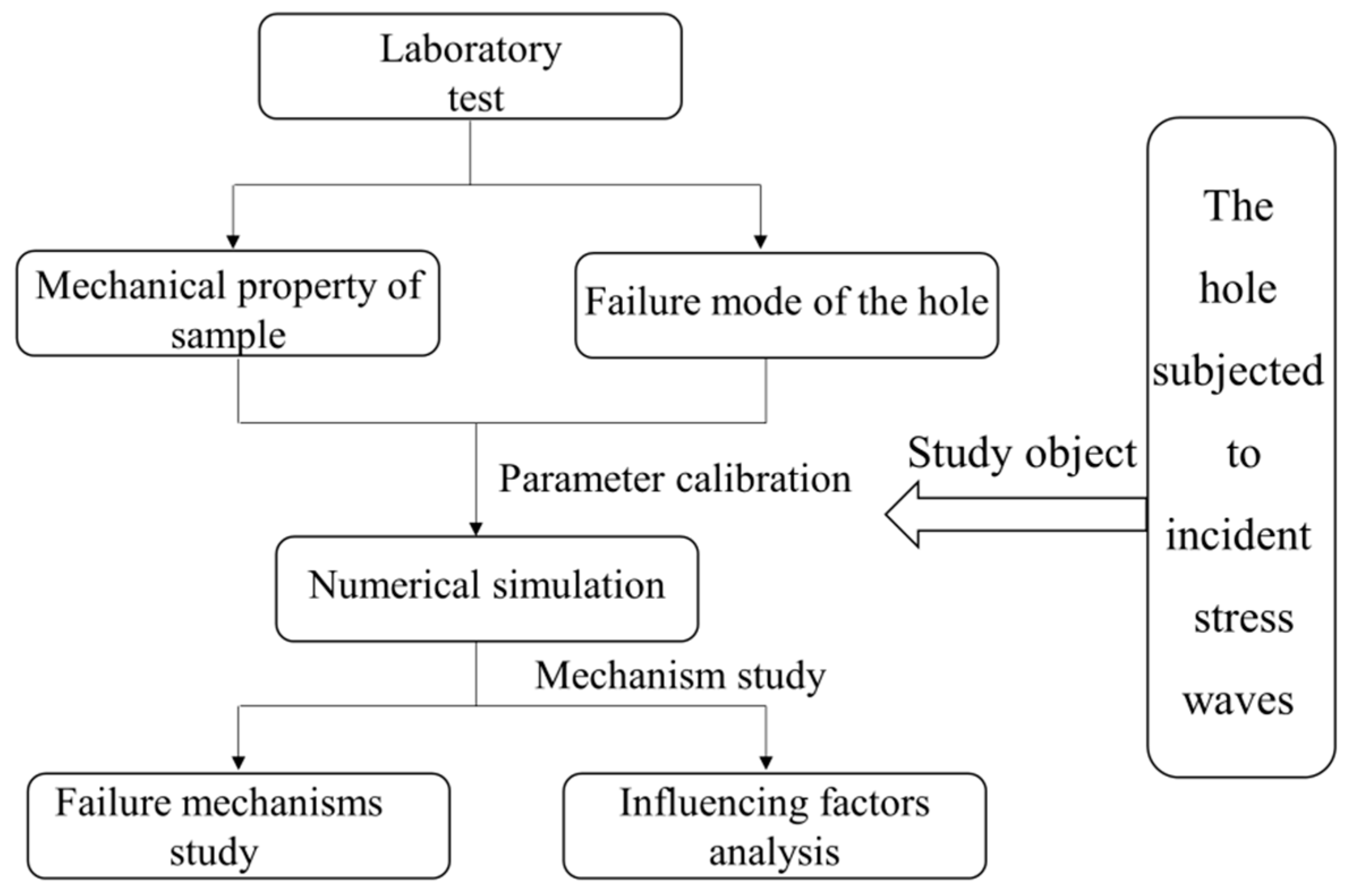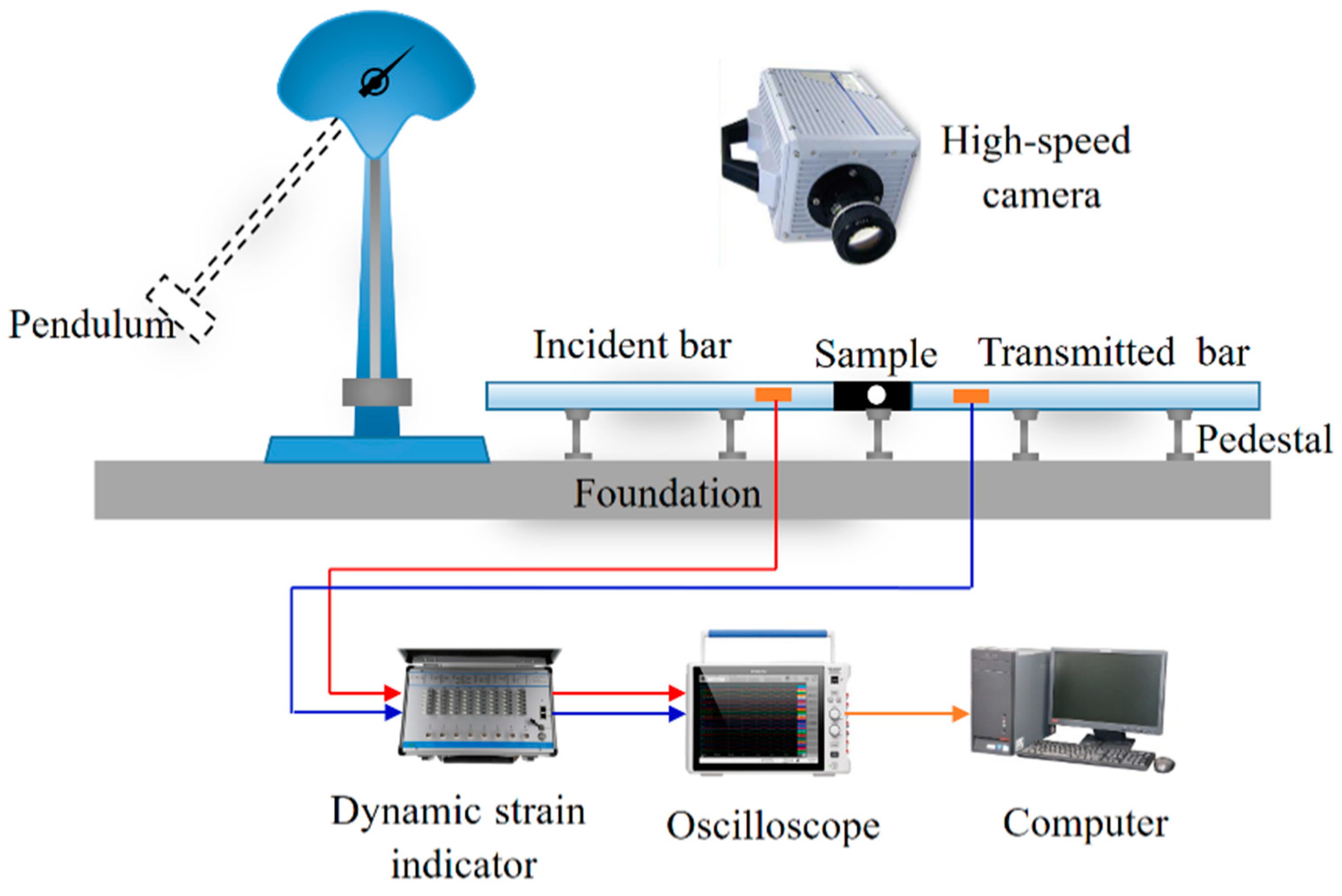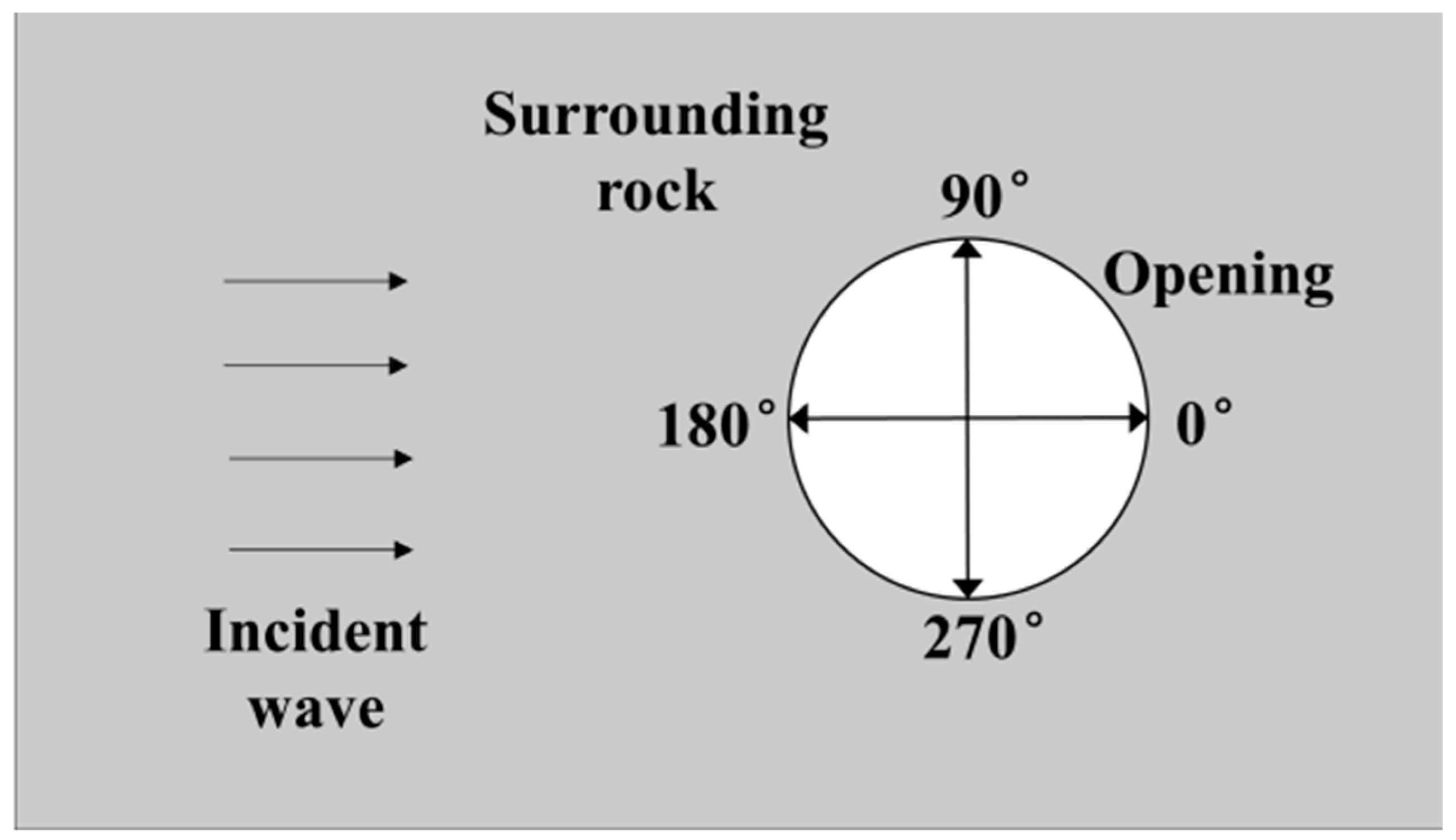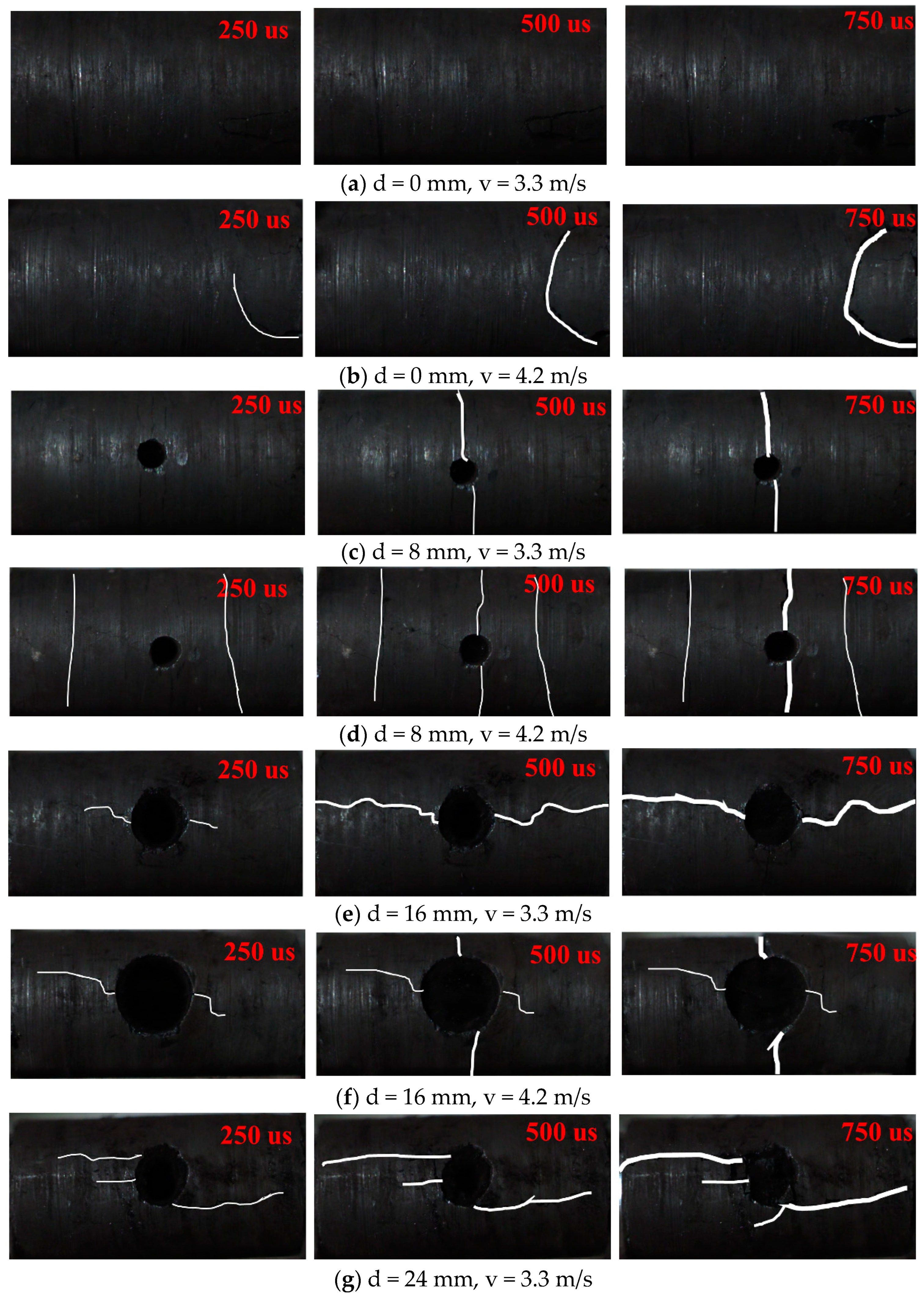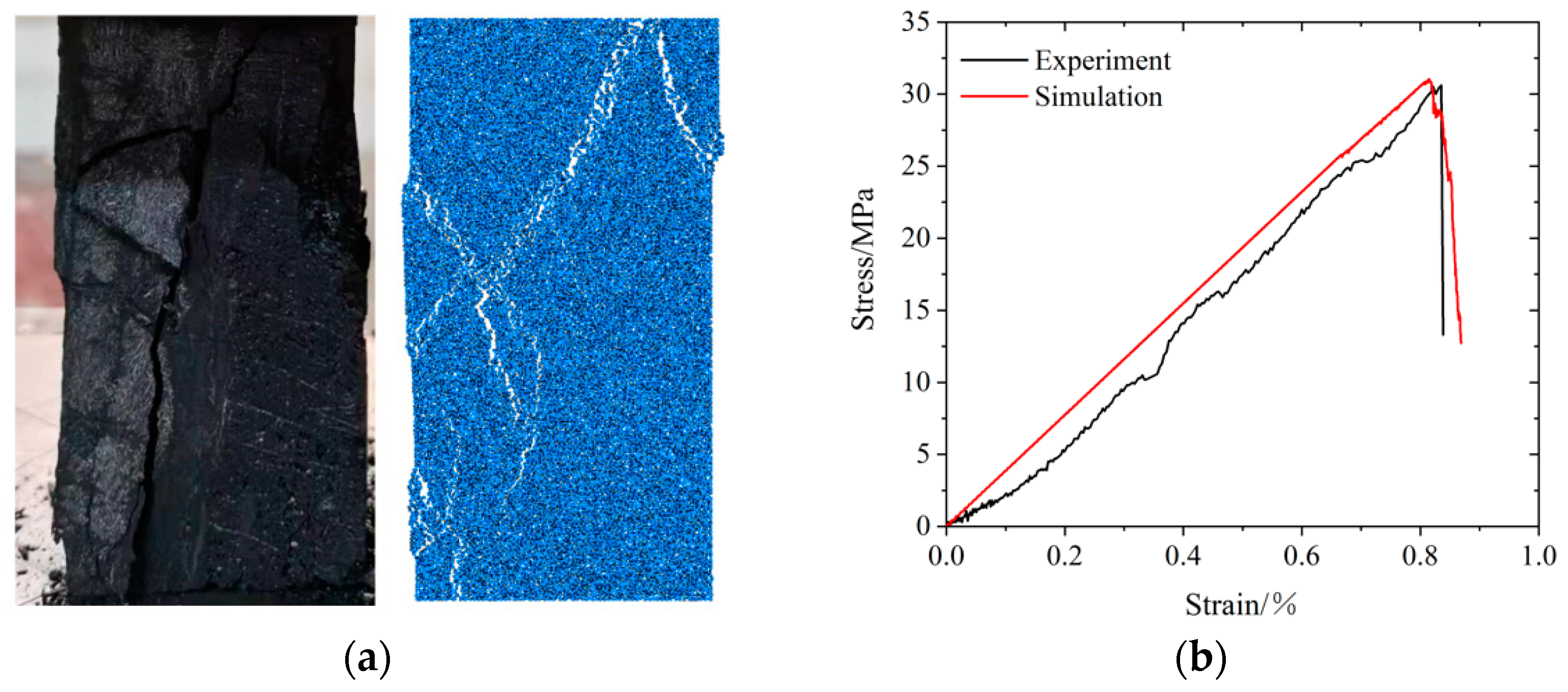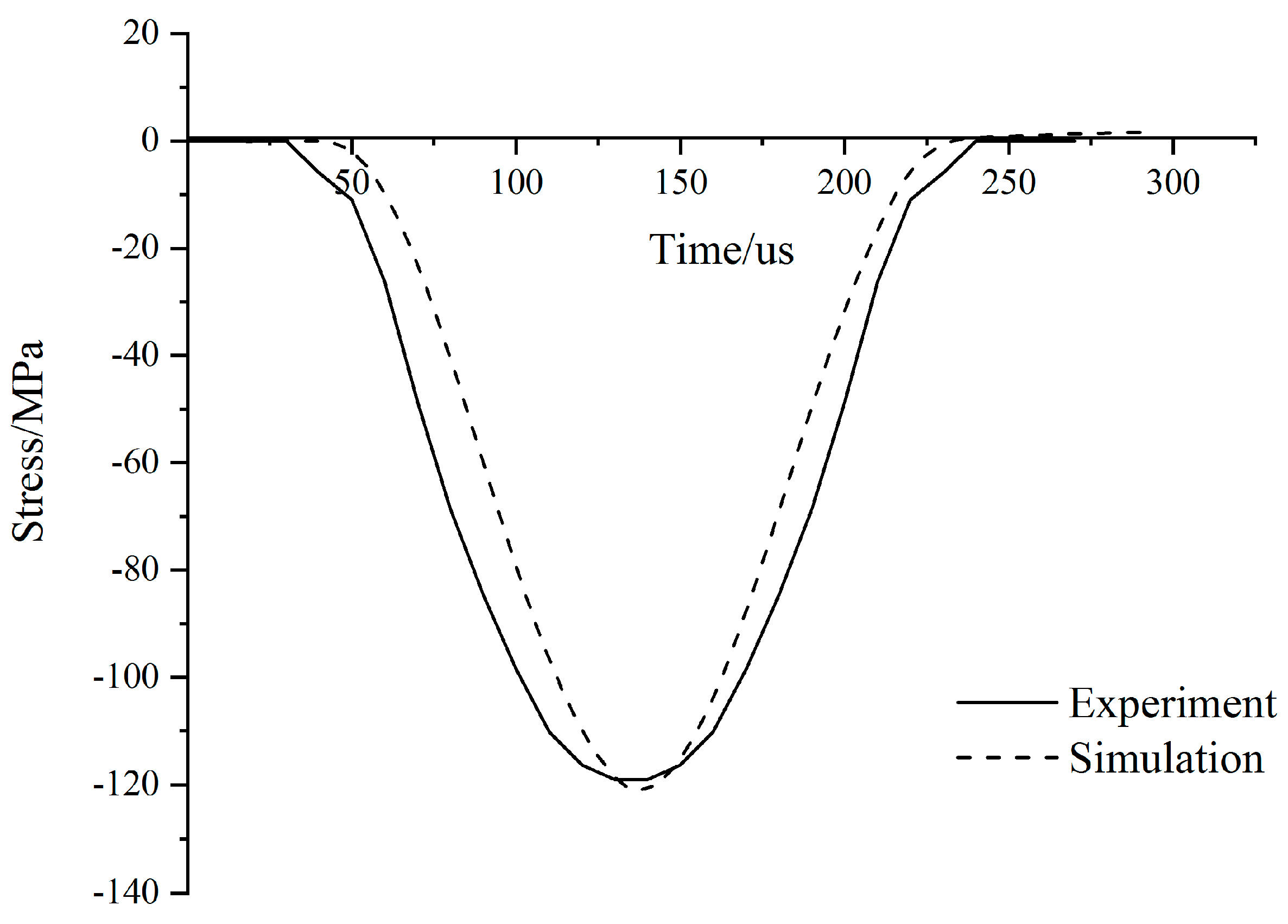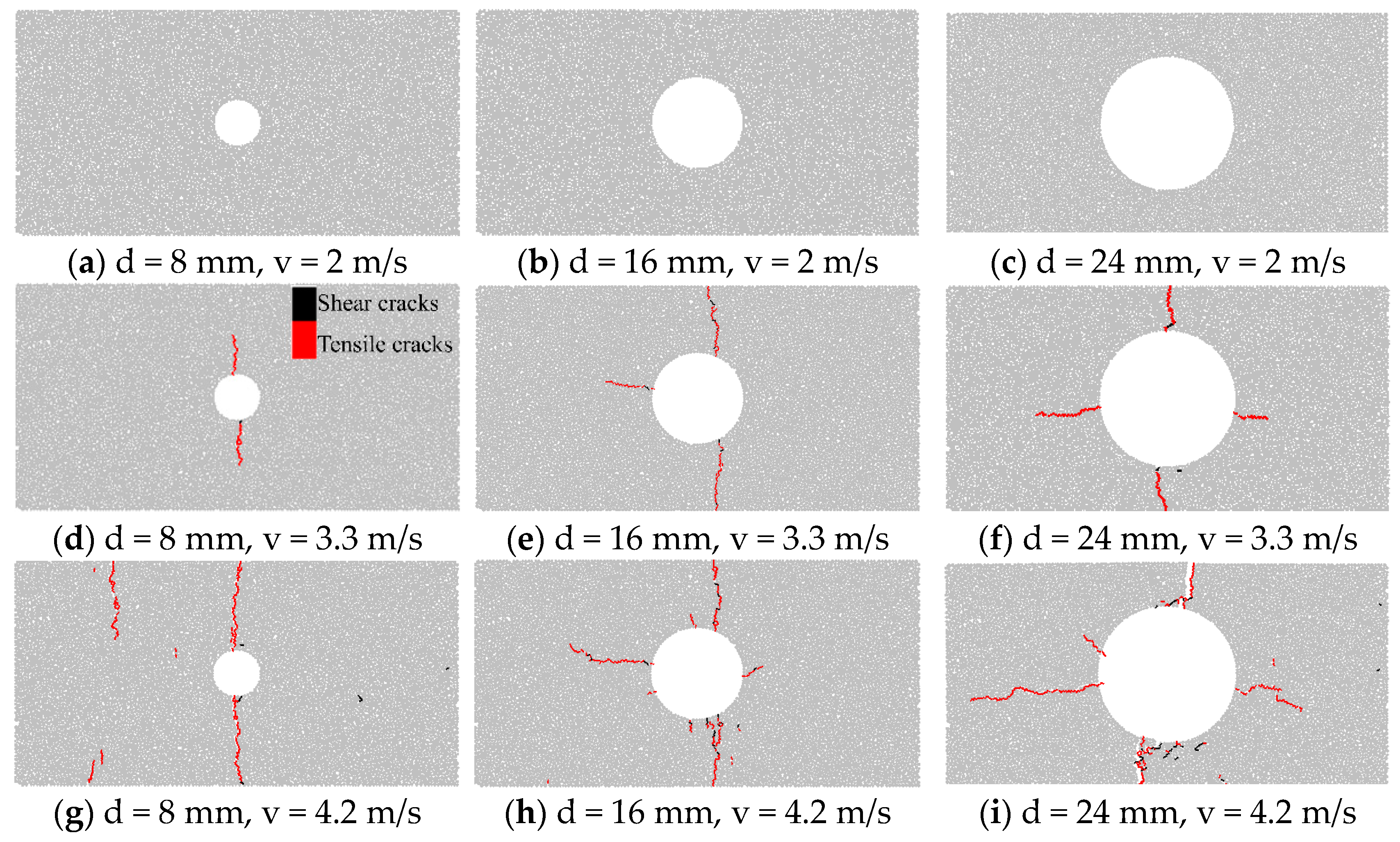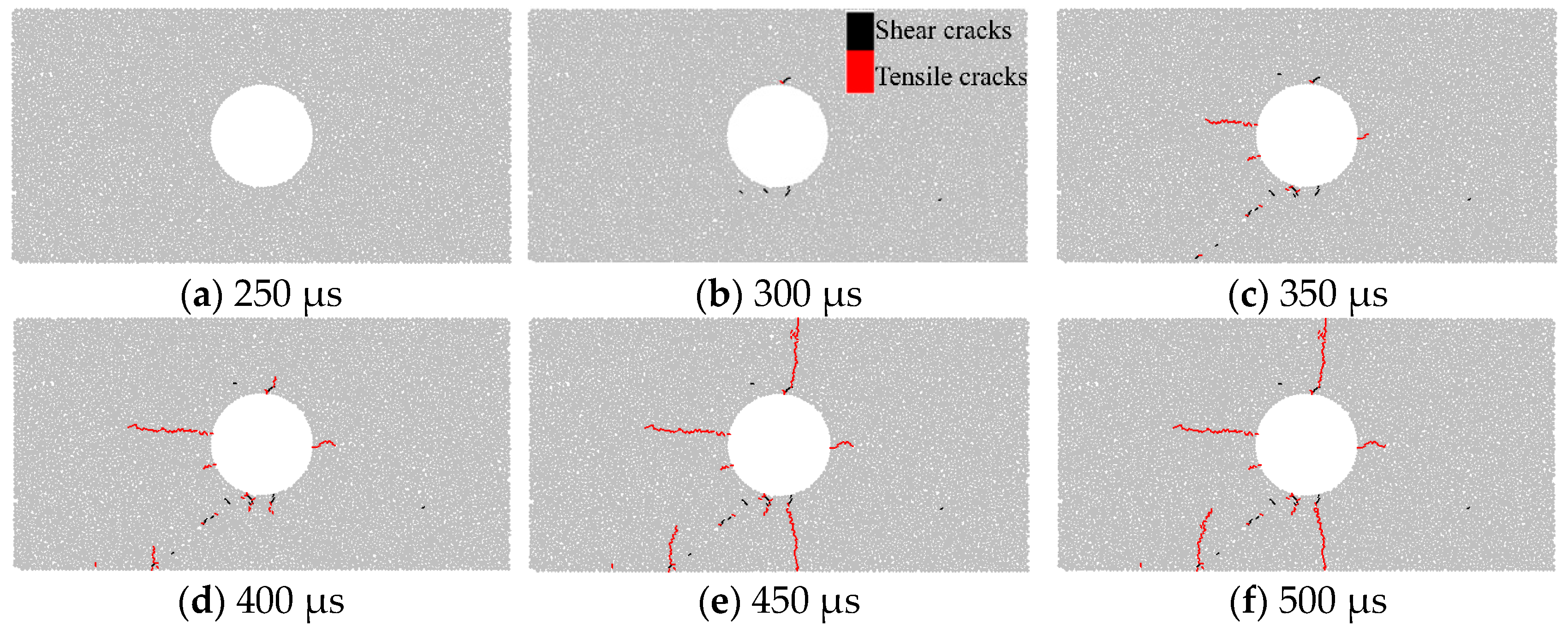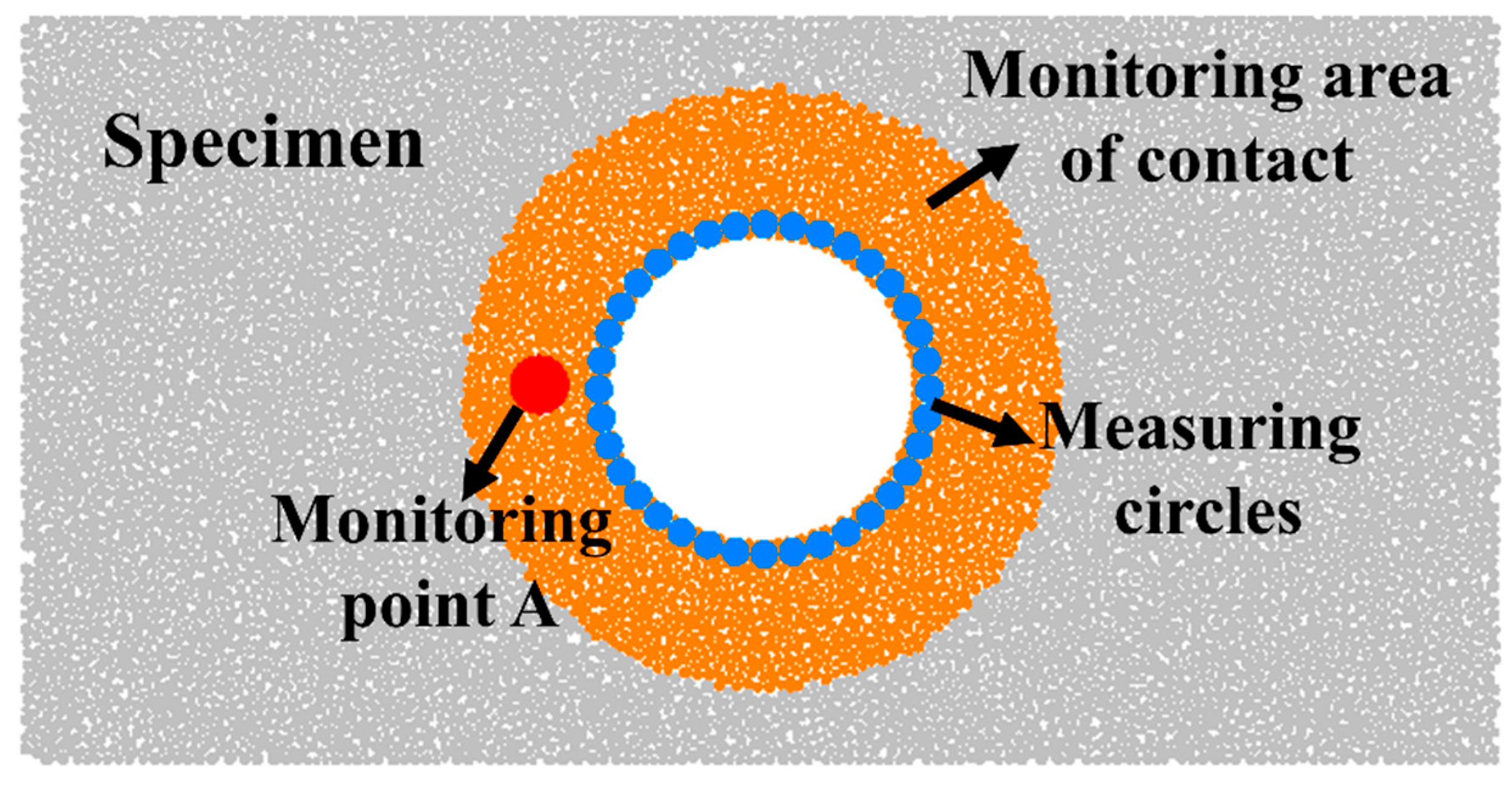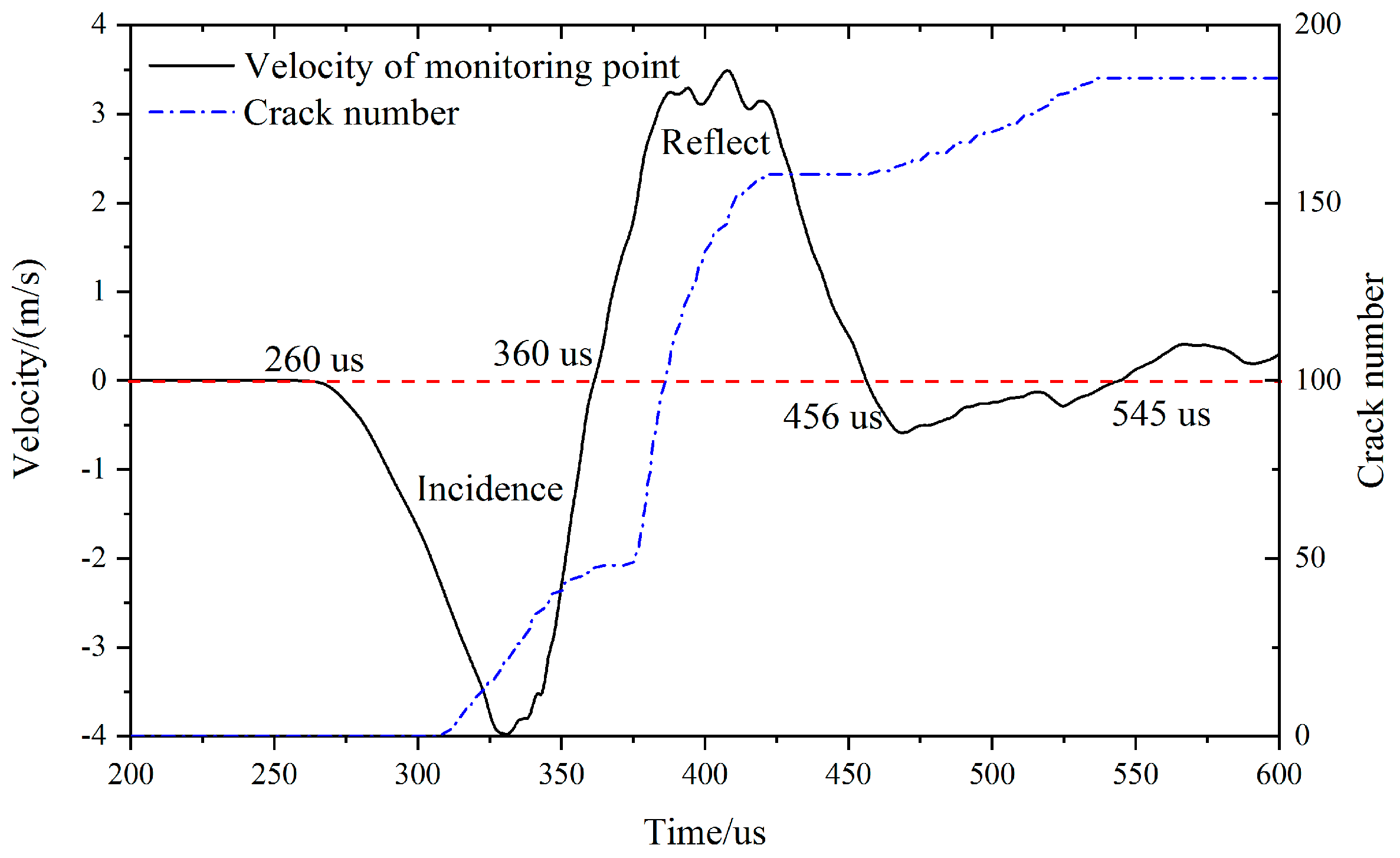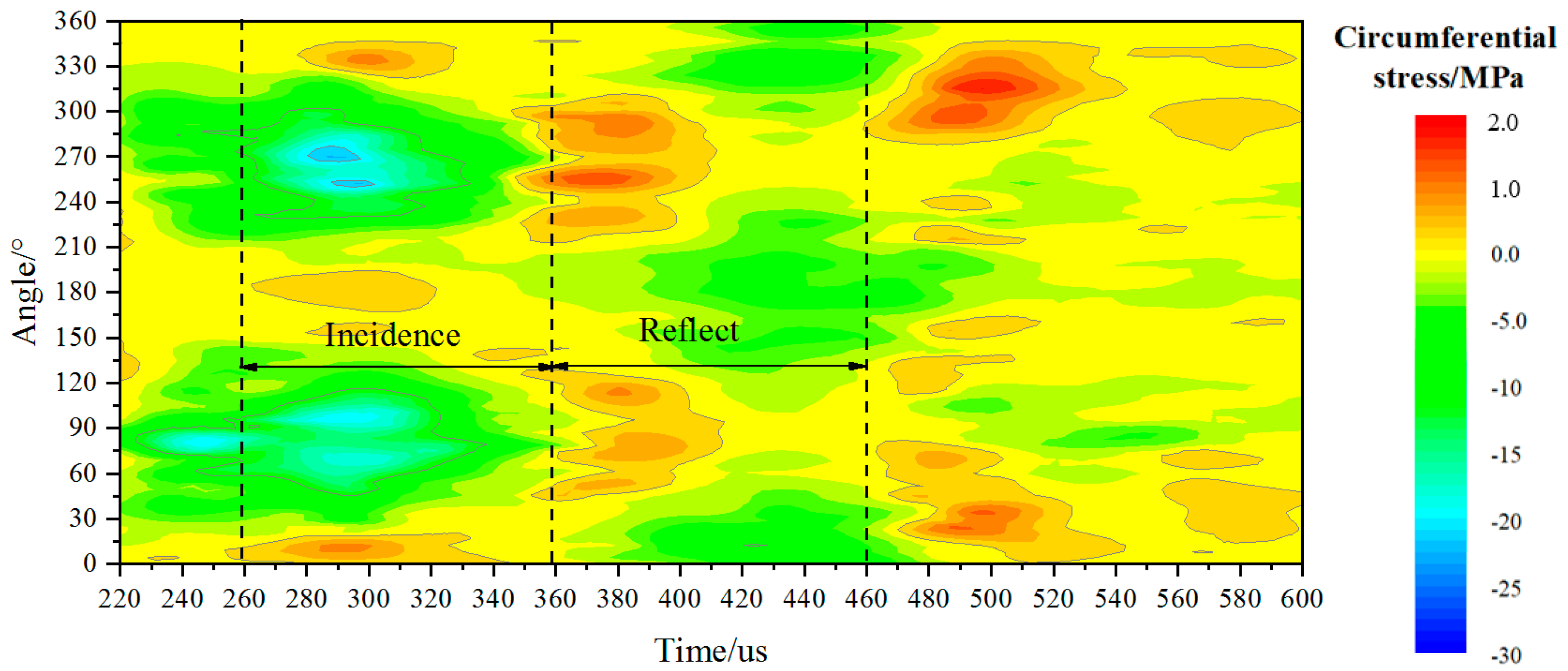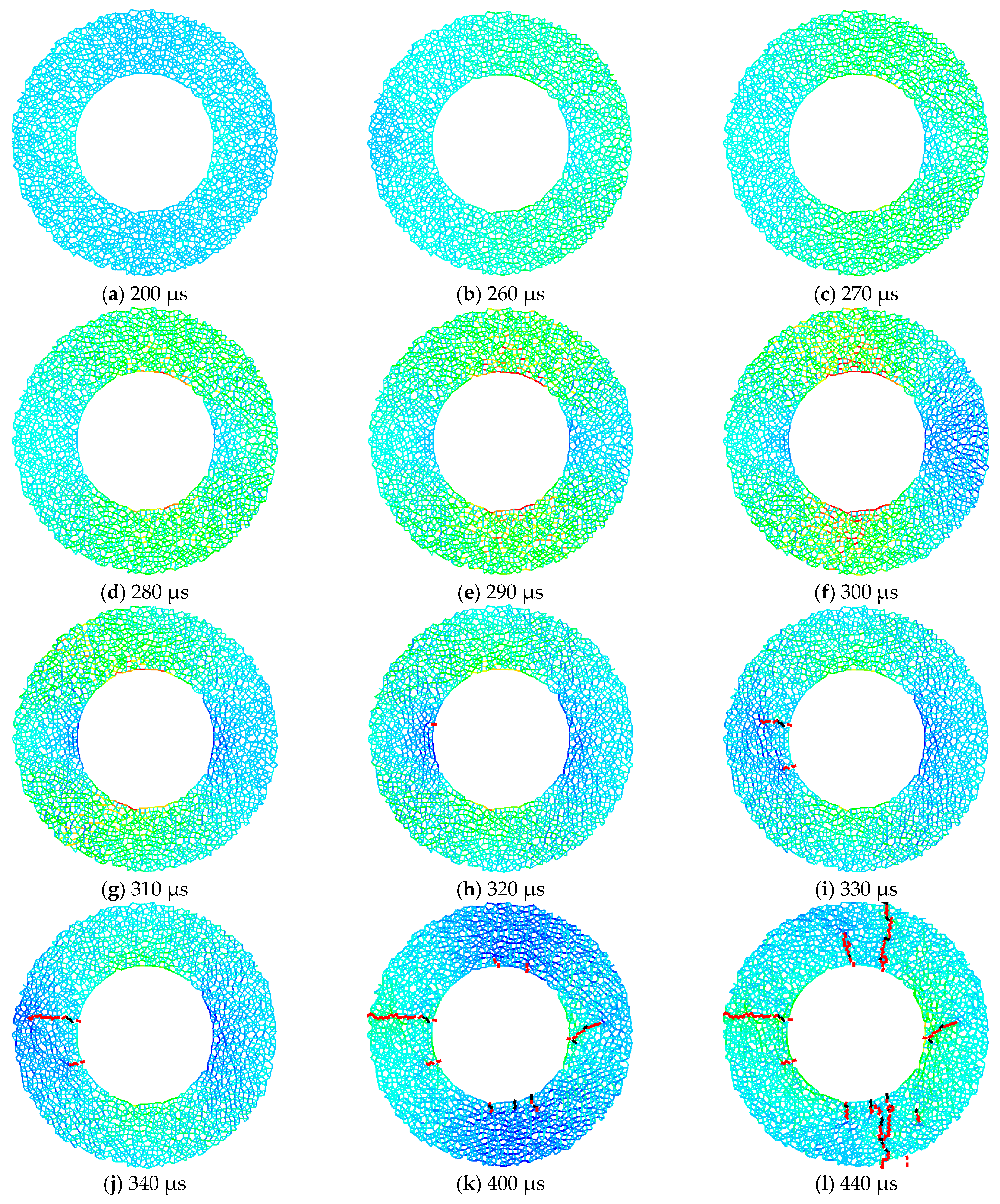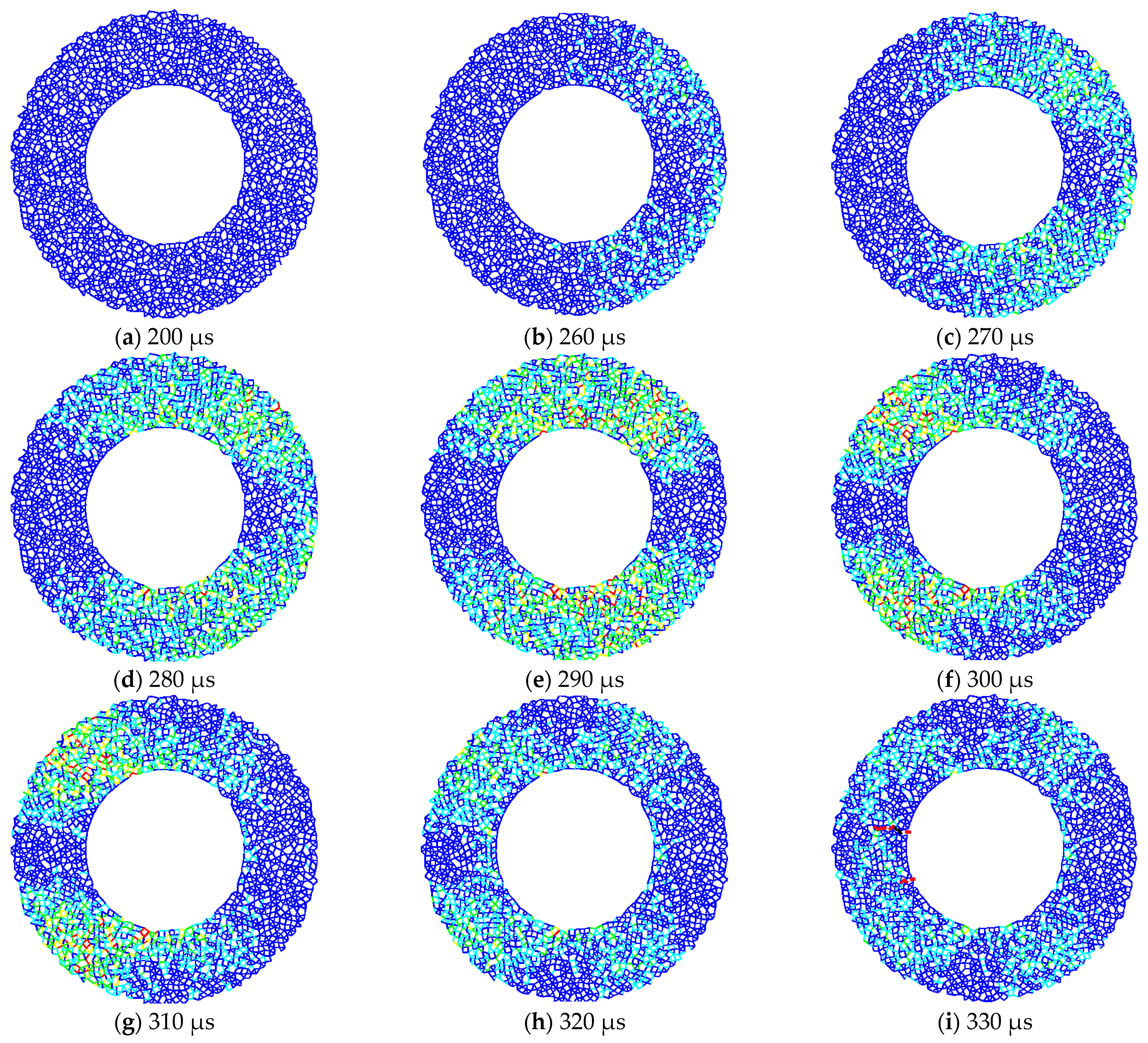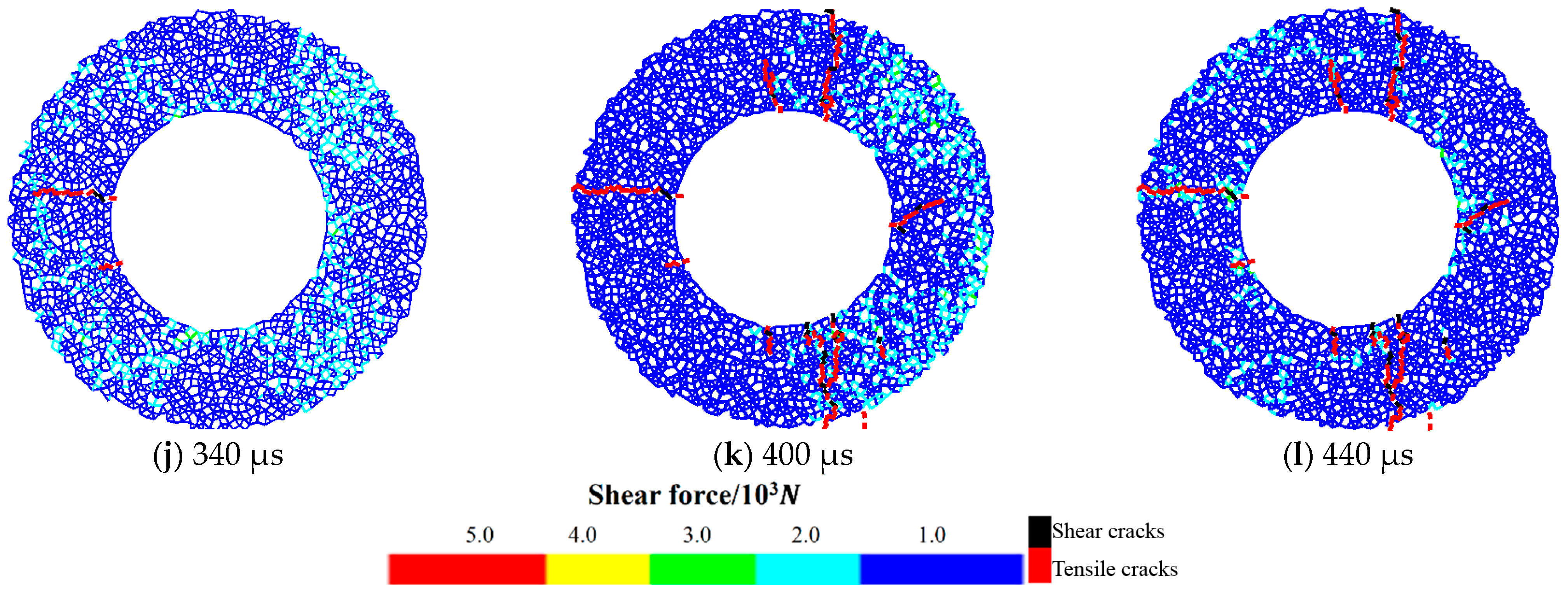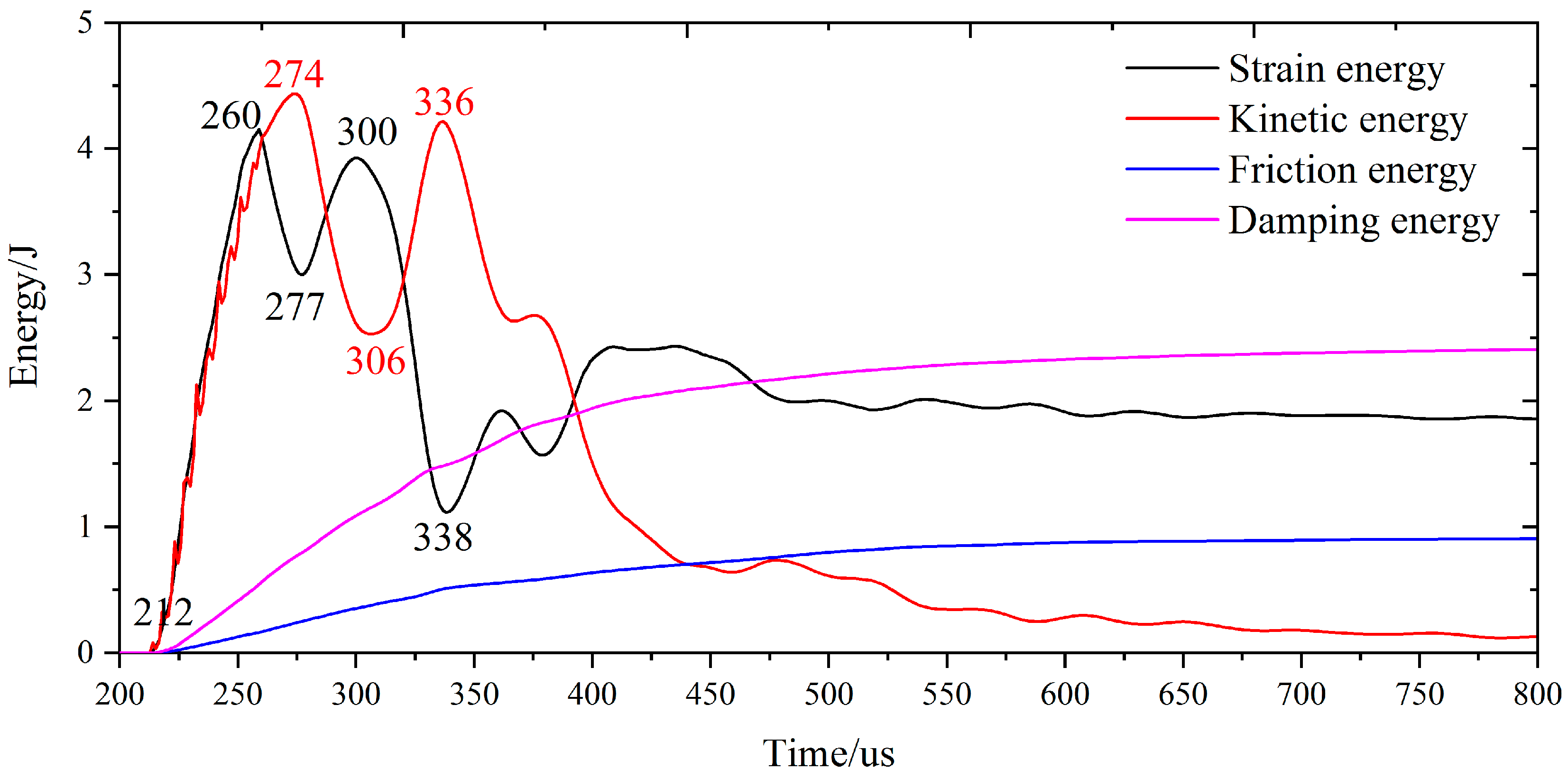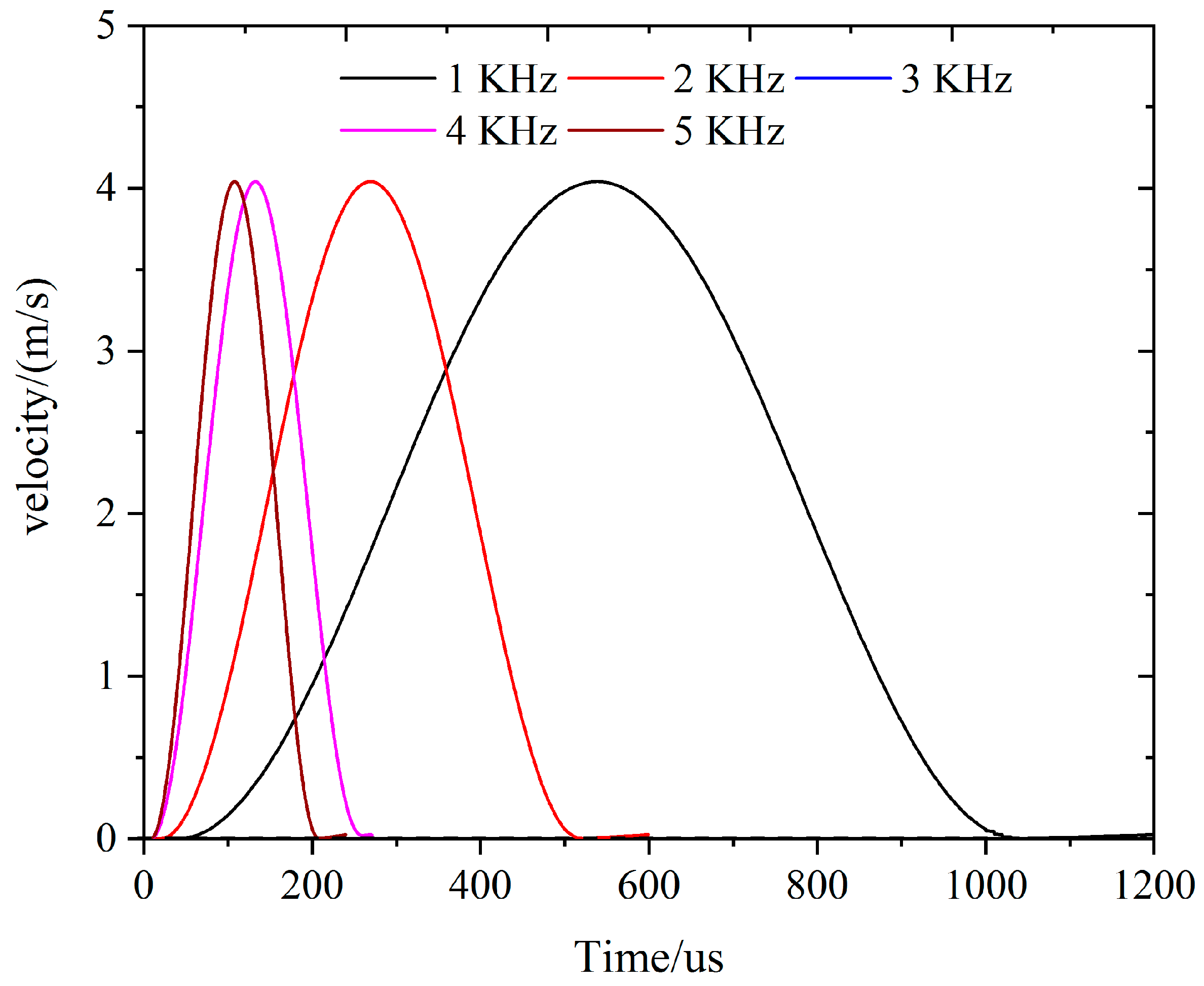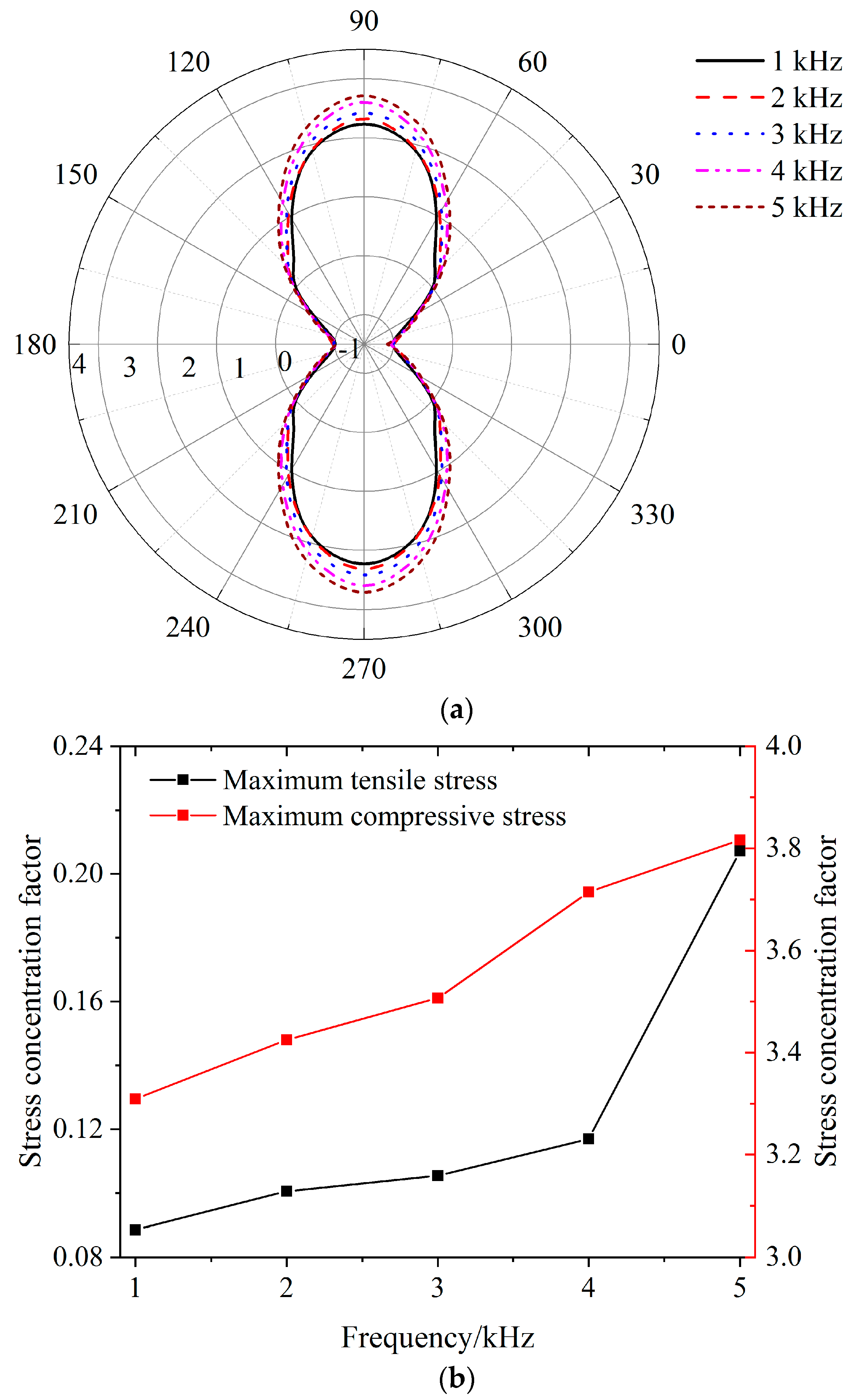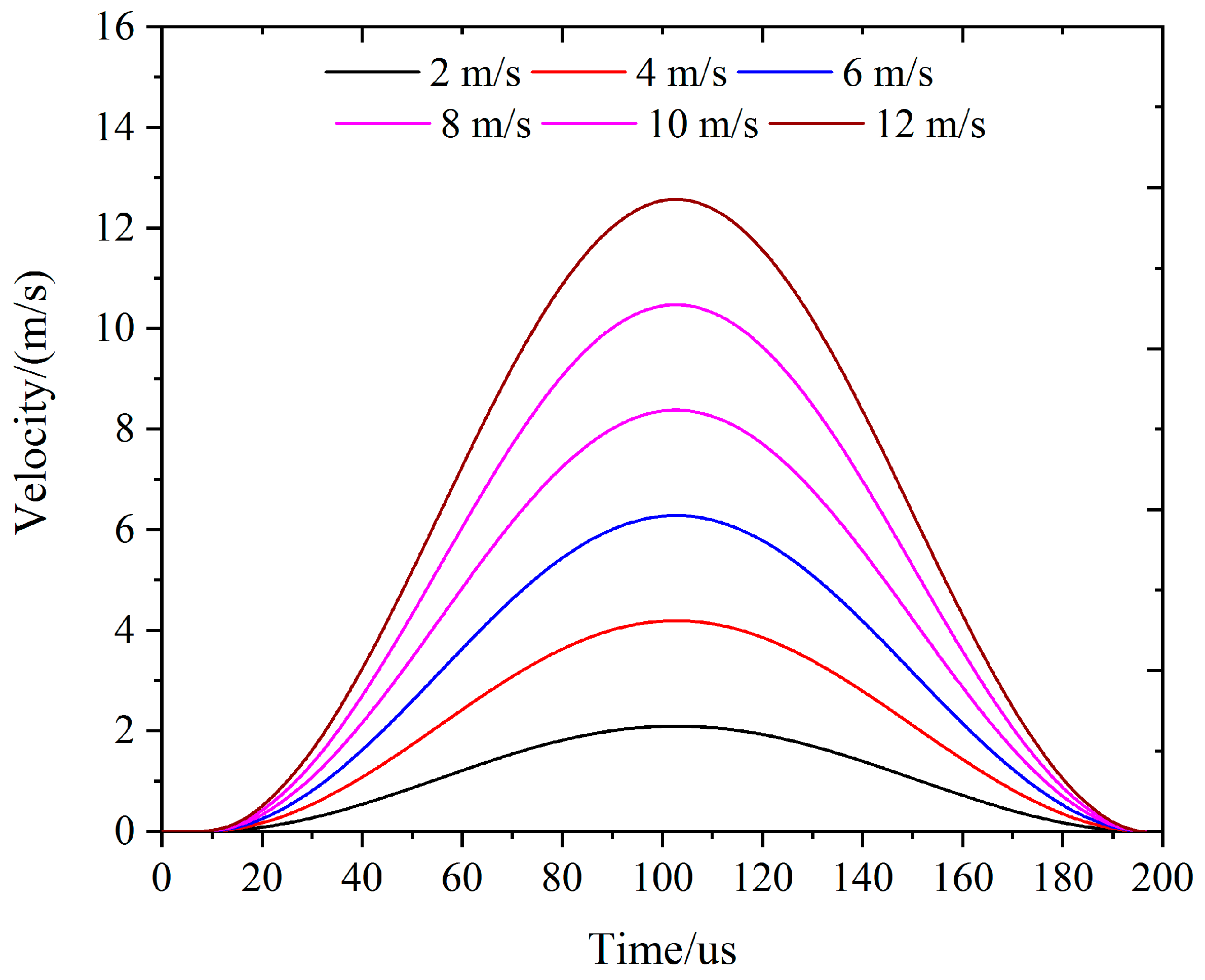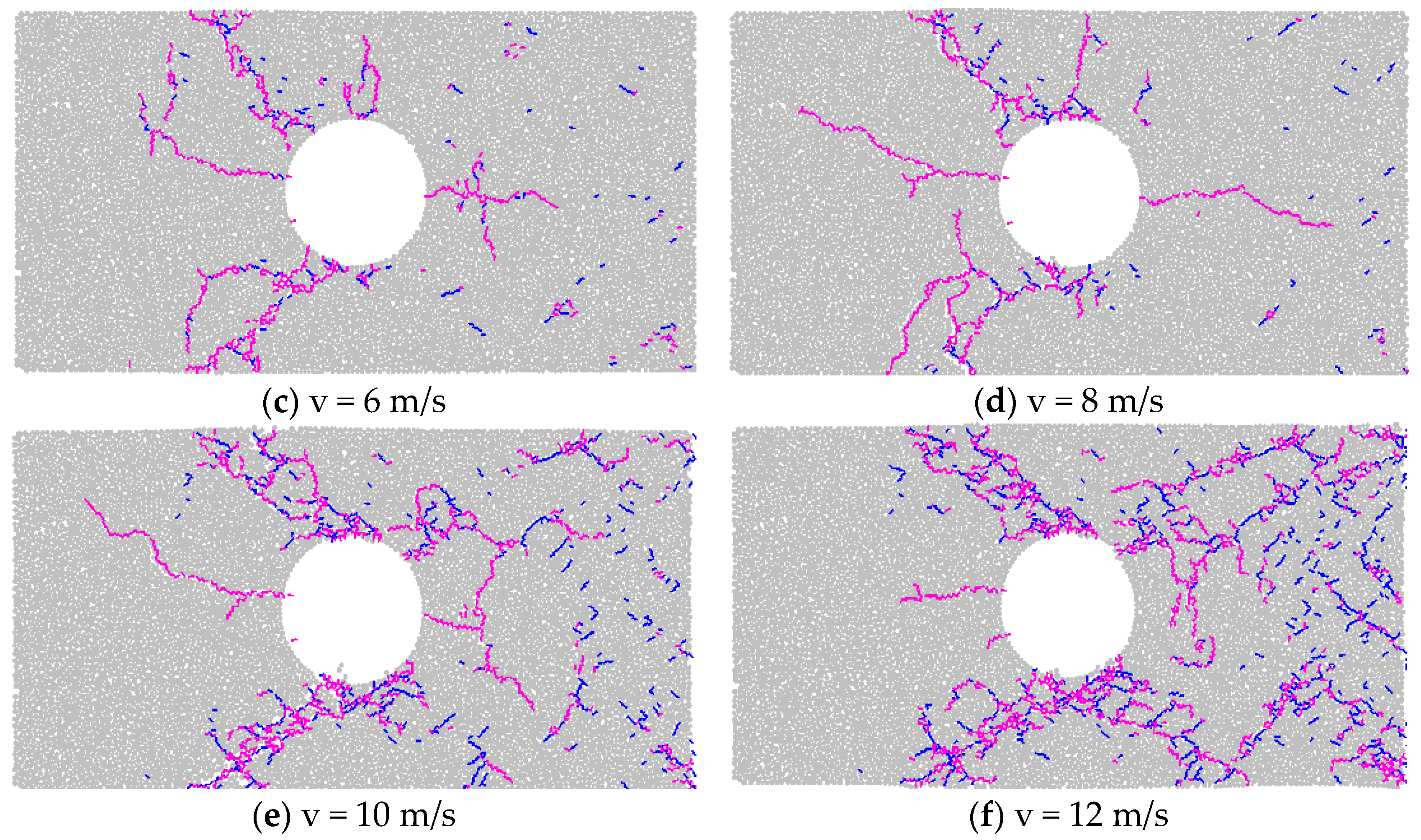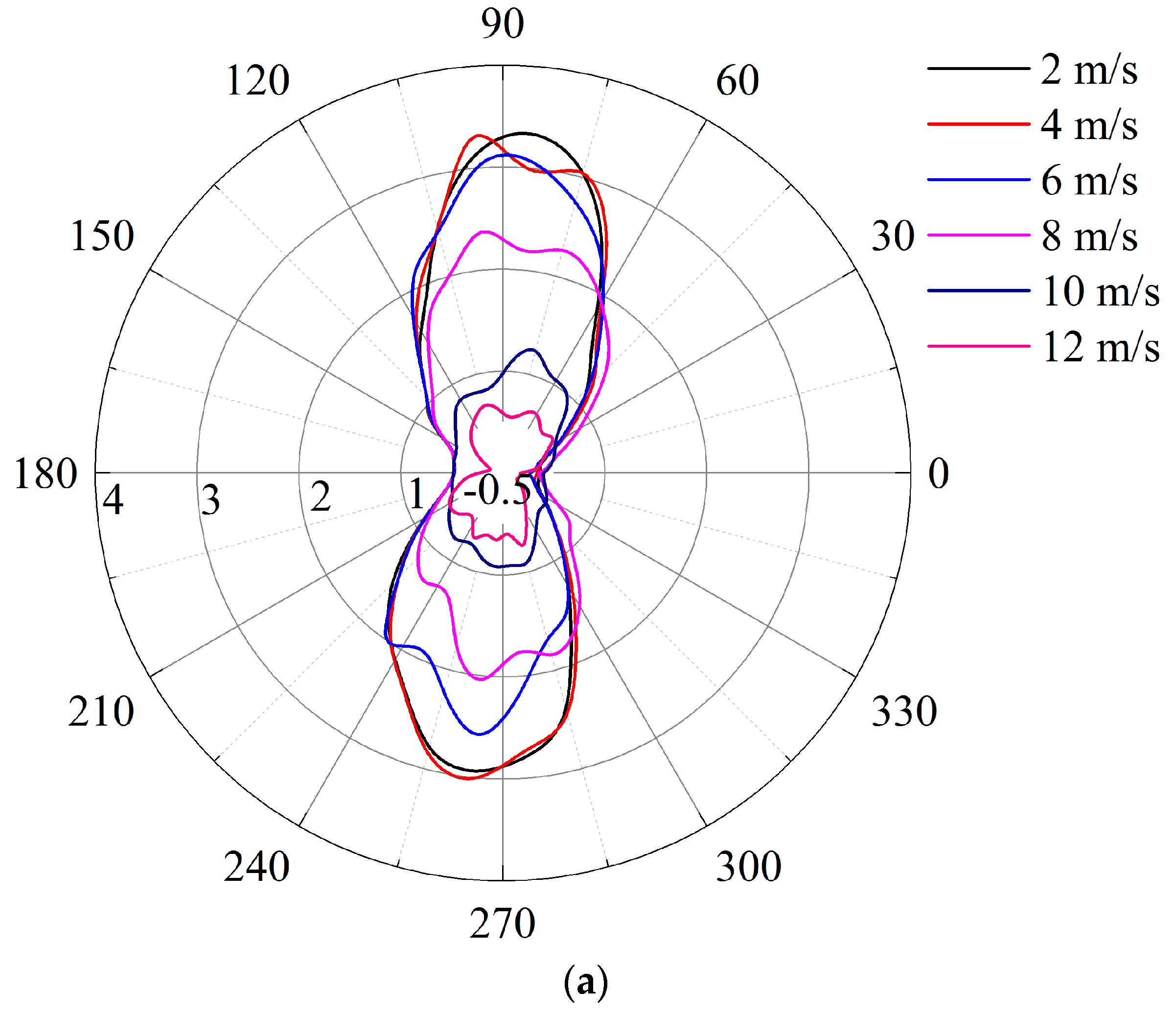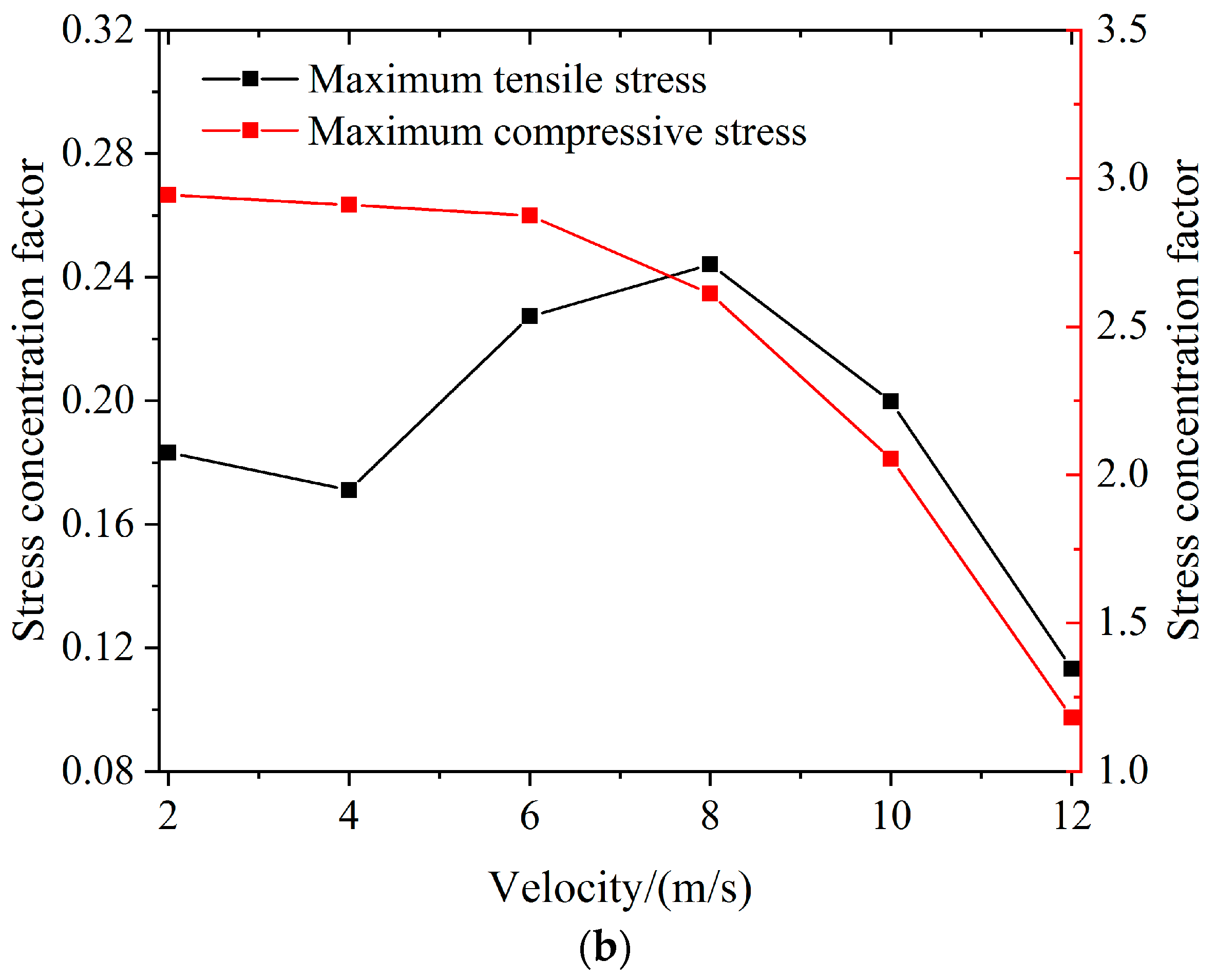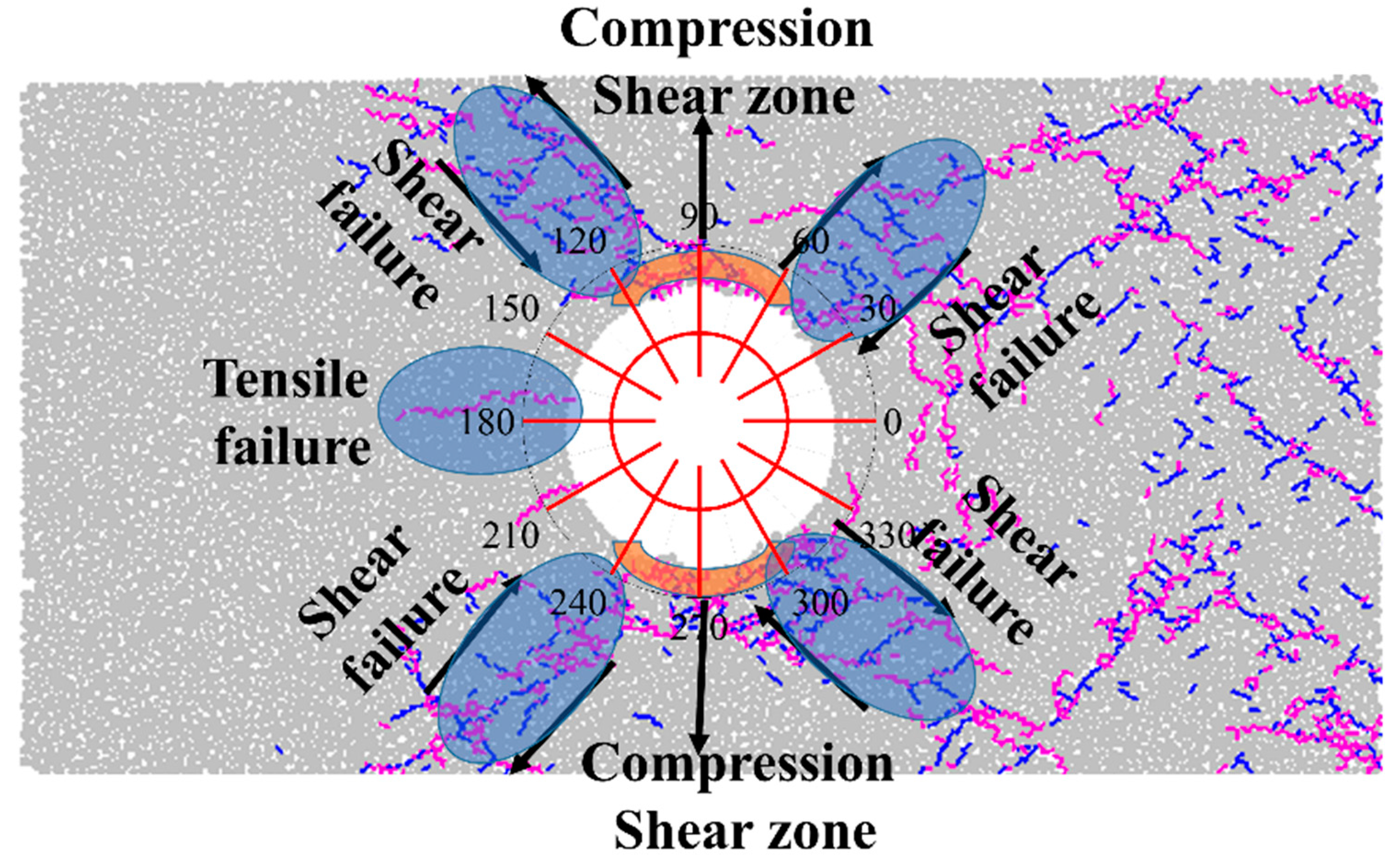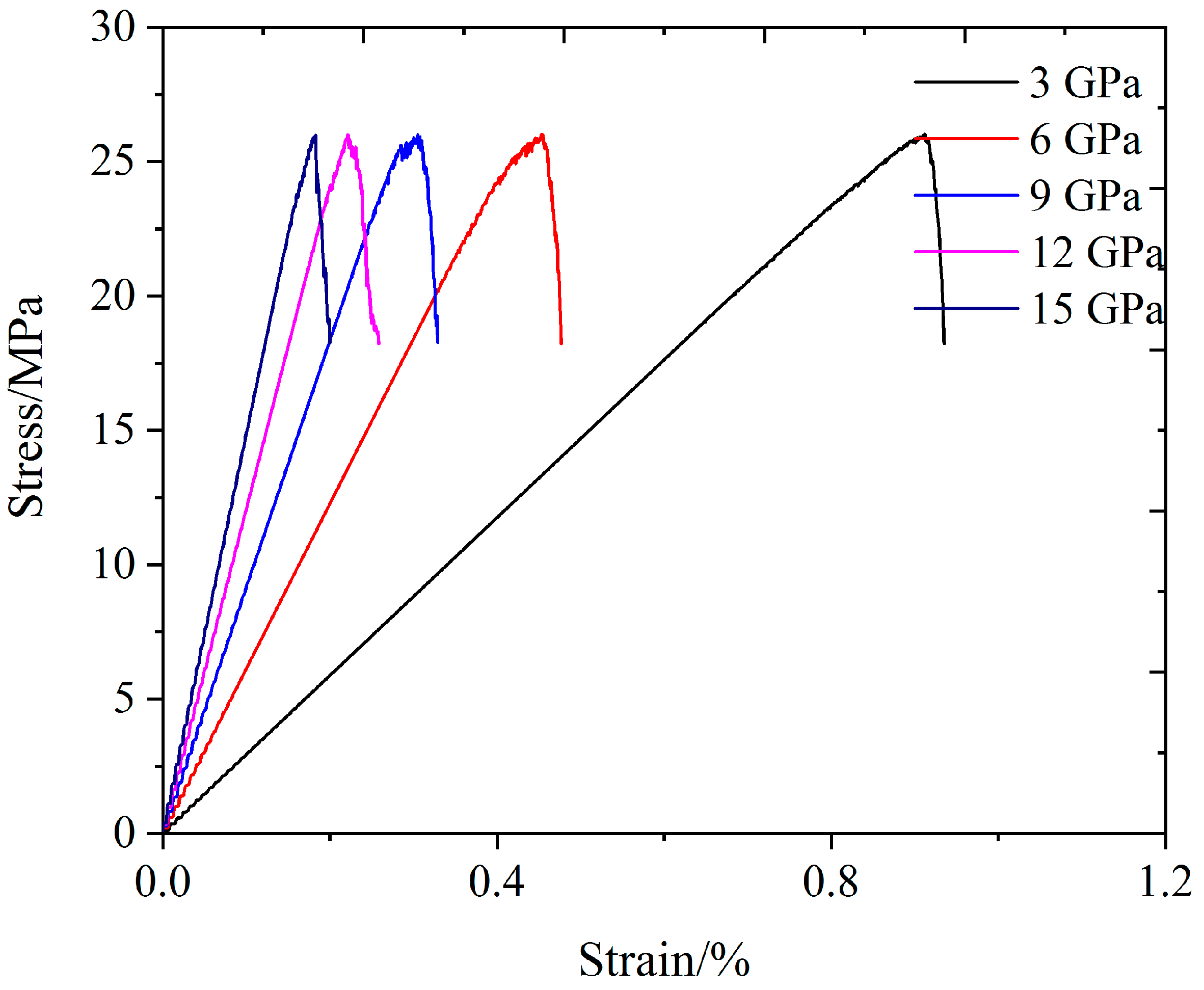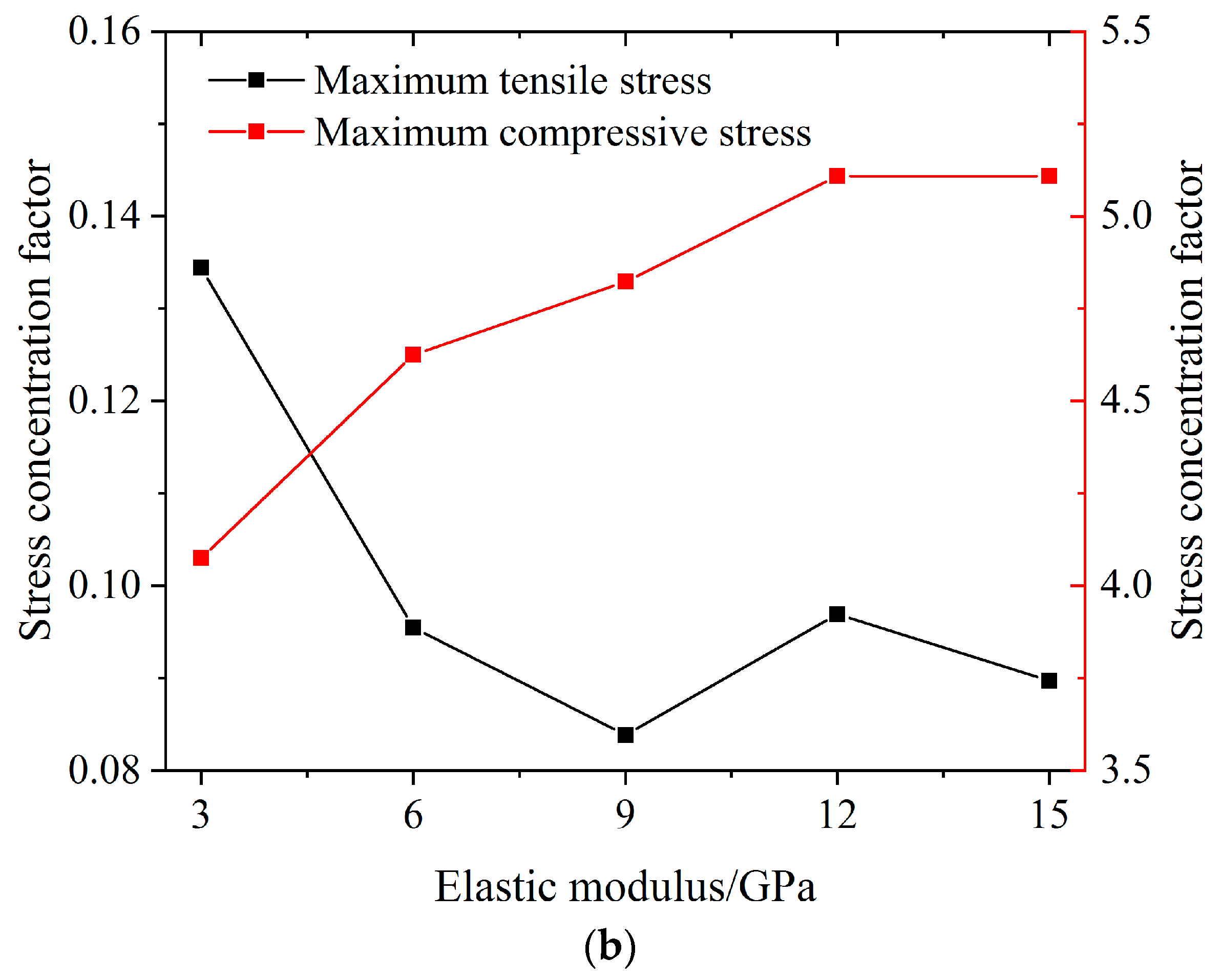1. Introduction
Mining tremors are highly common dynamic phenomena in mining operations, which are essentially the release of locally accumulated elastic energy during rock fractures. The intensity of mining tremors is determined by the fracture scale, mechanical properties of the rock materials, stress conditions of the seismic source, fracture model, and many other factors [
1,
2]. Similar to earthquakes, strong tremors cause the violent shaking of ground buildings [
3,
4], the collapse of underground cavities, gas outbursts [
5], and rockbursts [
6]. In particular, at larger depths of mining operations, underground openings are under conditions of high geo-stress and the disturbance of strong mining tremor, which can easily cause surrounding-rock fracture, disintegration, and caving to the goaf; it can even induce dynamic disasters.
In recent decades, scholars have conducted a lot of research on the stress distribution and failure mechanism of underground roadways [
7,
8,
9,
10,
11]. In 1898, Kirsch [
8] obtained the analytical formula of the stress field around the circular cavity for the first time based on the assumption of the plane strain. In 1952, Karl [
9] analyzed the influence of the hole shape on the stress concentration of the surrounding rock. Then, the stress field distribution of a non-circular roadway is obtained through the complex function method [
12,
13,
14]. Martini et al. [
15] studied the mechanism of the progressive failure of three-dimensional roadways, indicating that the surrounding rock of the roadway would fail in spalling when the tangential stress exceeds its compressive strength. From this research, it can be found that most of the studies on the stress concentration around the cavity mainly focus on the static and quasi-static conditions and rarely consider the impact of dynamic disturbances.
Mine tremors mainly radiate energy in the form of stress waves. When a stress wave arrives at underground openings, it transmits and bends along the hole and generates diffraction owing to the difference in wave impedance between the rock and air. This causes the stress at the edge of the hole to be significantly higher than that in other areas. Mitelman and Elmo [
16] pointed out that when stress waves caused by an explosion reach the tunnel boundary, they will be reflected and converted into tensile stress waves, resulting in the failure of the surrounding rock (i.e., spall failure). Similarly, the literature [
17,
18,
19,
20] also focuses on the influence of rock tensile strength and stress wave incident strength on spalling. However, the spall failure is only a part of the reason for roadway failure induced by stress waves. As a whole structure, the stress distribution of the surrounding rock differs greatly in different regions of roadways under the disturbance of stress waves, rather than only tensile stress. Compression caused by stress wave incidence is also an important cause of hole failure [
21,
22,
23]. Therefore, the stress evolution process of the whole structure of the hole generated by stress wave incidence has drawn attention. Pao and Mow [
23] elaborated on the method for solving dynamic stress concentration, which lay the foundation for the following research in the field. Then, the dynamic stress distribution of the surrounding rock under more complex incident waves and irregular roadway shapes is studied through the indirect boundary integration equation method and the wave function expansion method [
24,
25,
26,
27,
28]. However, these studies only focus on the stress change around the roadway at the moment of incident stress waves, ignoring the influence of the rock’s mechanical strength on the stability of the surrounding rock, and lack in-depth investigations into the failure process of the surrounding rock.
The particle flow code (PFC) has been widely used to study the mechanical properties and micro-failure mechanism of rocks. This method can simulate the mechanical behavior of crack formation, penetration, and macroscopic fracture of rocks under external force. In addition, it can continuously monitor the characteristics of stress concentration and transfer, energy conversion, displacement, and deformation during rock fractures. For example, Li et al. simulate the dynamic responses around an underground tunnel subjected to blasting load by the particle flow code (PFC) [
29]. Castro-Filgueira et al. proposed a method for simulating the triaxial experiment of granite based on a flat joint contact model [
30]. Xu et al. studied the effect of heating on the fracture behavior of cemented backfill through PFC [
31]. In addition, the PFC is suitable for studying the mechanical properties of rocks under impact dynamic loads. Luo et al. established a split Hopkinson pressure bar (SHPB) numerical model using PFC to study crack generation, interaction, and energy conversion in the process of sandstone impact failure [
32]. Yuan et al. established a model of blasting fracturing rock stratum using PFC and studied the influence of decoupling charge on the increase in crack growth in sandstone [
33]. Thus, PFC numerical tests can be used to study the dynamic response characteristics of holes under stress waves.
It can be seen from the above that there have been a lot of studies on the stress concentration of the hole. However, on the one hand, the current research mainly focuses on the fracture mechanism of roadways under the condition of static stress concentration, while the research on failures induced by dynamic disturbance is relatively few. On the other hand, the existing research on dynamic disturbance mainly focuses on dynamic stress evolution but lacks an in-depth discussion on the critical failure conditions of holes and the analysis of the difference between failure modes in different regions. In view of this, as the flowchart shows in
Figure 1, in this study, the initial generation position, the penetration process of the hole edge crack, and the final failure mode of the entire sample during the incident stress wave are first captured based on SHPB laboratory tests. This is performed to characterize the failure mechanism of holes caused by the incident stress wave. Then, the temporal and spatial variations in circumferential stress around the hole, crack formation, and energy conversion are monitored and investigated by PFC simulations. In addition, the failure modes in different areas of the hole are analyzed. Finally, the effects of the stress wave frequency, amplitude, and elastic modulus of the rock on the surrounding rock stability are discussed.
Considering that plenty of strong mine tremors can cause the deformation and failure of roadways, the main contributions of the study are as following: (1) the stress evolution process of the overall structure of the surrounding rock of the roadway after the incident of the stress wave is obtained. Considering the rock strength characteristics and dynamic stress evolution, the failure process of the surrounding rock is deeply analyzed, and the causes and differences of the failure of the surrounding rock in different regions are revealed; and (2) the research results are conducive to understand the failure mechanism when roadways are subjected to stress waves radiated by mine tremors, which is highly significant for proposing corresponding support methods for underground roadways/tunnels subjected to mining-tremor disturbances.
4. Analysis of Simulation Results
4.1. Stress Variation
The hoop stresses are higher than the radial stresses in an opening subjected to dynamic loading. Furthermore, the local concentration of hoop stress results in surrounding rock failure.
Figure 10 shows the evolution of cracks around the hole. The hoop stresses can be monitored by measuring circles arranged around the hole, as shown in
Figure 11. The duration of the incident/reflected stress waves can be estimated by monitoring the variation in the x-direction velocity of point A in
Figure 11, as shown in
Figure 12.
The duration from crack generation to the final failure of the specimen was 220–600 µs.
Figure 13 shows the temporal and spatial variations in the hoop stresses around the hole in the period. According to
Figure 11, the x-direction velocity of point A was consistent with the incident direction during 220–360 µs. This indicates that the incident stress wave reached the hole for the first time, thereby causing hoop stress concentration at the edge of the hole. The compressive stress was concentrated at the angles of 30–150° and 210–330° with peak stress of 30 MPa. Meanwhile, the tensile stress was concentrated at angles of 150–210°, 0–30° and 330–360° with peak stress of 2 MPa. At 320 µs, a crack started to initiate at 180° from the hole edge (
Figure 10). The tangential tensile stress exceeded the tensile strength of the specimen, which resulted in the generation of cracks in this area. The tensile crack was first generated at an angle of 180° because the hoop tensile stress exceeded the tensile strength of the specimen at 320 µs. There were a few cracks in the compression stress concentration area. This indicated that the compressive hoop stress did not attain its compressive strength. Correspondingly, the number of cracks increased abruptly (
Figure 12) during 320–360 µs. This stage mainly manifested the generation and expansion of horizontal cracks. In the period 360–456 µs, the x-direction velocity of point A was opposite to the incident direction owing to the reflection of the stress wave transmitted to the transmission bar. Accordingly, the tensile stress concentration started to gather and form at the angles of 90° and 270° around the hole, and cracks began to be generated in this area. Therefore, the cracks started to rapidly add again (see
Figure 10) during 396–456 µs. This stage is the generation and propagation of vertical cracks. During 456–545 µs (
Figure 12), the stress wave was reflected again when it arrived at the incident bar. However, the stress wave amplitude reduced significantly owing to most of the energy consumption for crack propagation and friction loss. As shown in
Figure 12, the tensile stress concentration was transferred to the area at the angles of 0–60° and 270–330°. However, the cracks increased less owing to the low strength of the stress wave.
To conclude, the formation of horizontal and vertical macrocracks in the specimen is a result of the tensile hoop stress concentration around the hole caused by multiple reflections of the incident stress wave. For the first incidence, the compressive stress and tensile stresses were concentrated in the areas of 90° and 270° and in the areas of 0° and 180°, respectively. Subsequently, the tensile stress concentration area was transferred to the vertical direction owing to reflection. This resulted in tensile failure in different areas. The stress wave strength decreased gradually after multiple reflections, crack growth, and friction damping consumption, and the failure of the specimen stopped.
4.2. Variation of Force Chain
In PFC, the specimen consists of many rigid particles bonded by deformable and destructible contact. Furthermore, the failure of the specimen is manifested by contact fracture.
Tensile cracks form when the normal stress of the contact exceeds the normal strength limit . Shear cracks are generated when the shear stress is larger than the shear strength limit .
Tension crack: , ;
Shear crack: .
Thus, the failure of the specimen was directly caused by an increase or decrease in the contact force in the different areas.
The simulation focused on the process of stress concentration and damage around the hole caused by the incident stress wave. Therefore, the normal and shear force chains in an annular area around the hole with a thickness of 0.01 m at different times were extracted. The monitoring area is shown in
Figure 11.
The normal-force evolution of the contact in the annular region is shown in
Figure 14. Tensile cracks occurred only when the normal force was negative. Before the arrival of the incident stress wave, the normal force of contact was a compressive chain with a value closer to zero (
Figure 14a). This was because the internal particles of the specimen after the initial formation were relatively loose with weak interactions. Subsequently, the particles began to compress each other, and the normal force increased accordingly with the effect of the stress wave at 260 µs once the front end of the stress wave arrived. The compressive stress converged from the incident end at the positions of 0° to 90° and 270° during 270–280 ms. During 290–300 µs, the compressive force at the positions of 90° and 270° gradually attained the peak (red force chain). However, no crack was generated because the compressive stress did not exceed the peak strength of the specimen. During 300–320 µs, the tensile force began to increase centrally in the region of 180° and attained a peak at 320 µs. Correspondingly, tensile cracks appeared and grew in the horizontal direction during 330–340 µs. At 400 µs, the stress wave was reflected after being transmitted to the transmission bar. The corresponding tensile stress area was transferred to the areas of 90° and 270°. Thereafter, vertical tensile cracks began to appear. Finally, macrofractures were formed in the horizontal and vertical directions at 440 µs.
Similarly, the shear force distribution of the contact in the annular area followed clear laws before and after the incidence of the stress wave. The shear force was low before the stress wave incidence (
Figure 15a). It began to increase at 260 µs owing to the arrival of the stress wave at the front end. During 260–310 µs, the stress wave was transmitted from the right to the left in the specimen. Furthermore, the shear force transferred from 0° to 90° and 270° and attained the peak value. Similar to the distribution of the compressive stress peak, the shear force peak was concentrated in the regions of 90° and 270°. No shear crack appeared because the shear force did not exceed the shear strength limit. At 400 µs, the stress wave attained the left end of the sample and formed a tensile wave. A decrease in the normal compressive stress in the specimen caused a reduction in the shear force. Finally, the shear force in the entire annular region decreased significantly and was close to zero at 440 µs. However, the shear force in the regions of 0° and 180° remained constant at zero.
To summarize, after the compressive stress wave reached the hole, a compression shear zone was formed straightforwardly in the area perpendicular to the incident direction, and a tensile stress concentration area was formed in the area parallel to the incident direction. However, because the tensile strength of rocks is generally less than its shear strength, tensile failure is more likely to occur first around a hole parallel to the incident direction when subjected to a compressive stress wave with a lower value. It can be inferred that the compressive shear stress strength increases with increasing impact velocity, and that shear failure may occur first in the vertical direction of the hole during the process of stress wave incidence.
4.3. Energy Conversion
The variation curves of the various energies after the stress wave was transmitted to the specimen are shown in
Figure 16. The strain energy was mainly stored in contact bonding. Each decrease indicated a break in the contact bond and micro-failure inside the specimen. At 212 µs, the stress wave began to be input into the specimen, the vibration speed of the specimen increased, and the kinetic energy increased abruptly. Simultaneously, the particles in the specimen were compressed compactly. This resulted in an increase in the strain energy of the contact between particles. After 260 µs, the strain energy first attained a peak and then began to fall. This indicated that the local accumulated strain energy attained the storage limits of the specimen and that microcracks appeared. Part of the strain energy released owing to the breakage of contact was converted into kinetic energy. Thereby, the kinetic energy increased, attained a peak at 274 µs, and then began to fall. At 277 µs, the strain energy began to increase because of the local stress concentration, and the local particles of the specimen were compacted. This was accompanied by the transformation of part of the kinetic energy into strain energy. Subsequently, the strain energy decreased abruptly during 300–338 µs, internal failure of the specimen occurred again, and the strain energy was released. This resulted in an increase in kinetic energy during 306–336 µs. This process occurred repeatedly until the failure of the sample stopped. Apparently, a mutual transformation between strain energy and kinetic energy occurs during the process of specimen failure, and the decrease in one type of energy would result in an increase in another type of energy. However, the decrease in energy should be larger than the increase in energy owing to the damping and friction energy consumption in the conversion process. The trends of the damping energy and friction energy maintain the level after increasing to a maximum value with the incidence of the stress wave. As a result, the final kinetic energy gradually tends to zero.
6. Conclusions
The process of cavity dynamic fractures subjected to stress waves was reproduced through laboratory experiments, to investigate the dynamic disaster mechanism of roadways induced by mine tremor disturbances. The corresponding stress redistribution and failure modes around the hole were investigated using numerical simulations. The main conclusions are as follows:
(1) According to the results of the dynamic impact experiment, the cracks in the specimens with different impact velocities and hole diameters first occurred in the regions of 0°, 180°, 90°, and 270°. This indicated that the stress was concentrated in these four areas;
(2) The instantaneous incidence of stress waves promoted stress redistribution around the hole. The tensile stress peak appeared on the incident and back sides, whereas the compressive stress peak was concentrated in the vertical direction. When the intensity of the stress wave was low, the tensile crack first appeared in the horizontal direction around the hole and then occurred in the vertical direction, owing to stress wave reflection. The process of hole failure was mainly the mutual transformation of kinetic energy and strain energy;
(3) With the increase in stress wave intensity, the compressive stress peak around the hole increased continuously, and its position deflected from the vertical direction to both sides. Meanwhile, the tensile stress peak remained concentrated in the horizontal direction. The hoop stress gradually evolved into a butterfly-type distribution. The corresponding failure mode of the hole transformed from horizontal and vertical tensile failure to X-shape shear failure;
(4) The characteristics of the stress wave and the properties of the specimen had a significant impact on the dynamic stress concentration around the hole. The MCSCF decreased with an increase in the incident wave amplitude and wavelength. As the elastic modulus of the surrounding coal increased gradually, the MCSCF first increased, and then remained constant. This indicated that the damage caused by the compressive stress wave was higher.
